To ask Unlimited Maths doubts download Doubtnut from https//googl/9WZjCW `x(1y^2)dxy(1x^2) dy=0`Solve your math problems using our free math solver with stepbystep solutions Our math solver supports basic math, prealgebra, algebra, trigonometry, calculus and moreInt (x^2 y^2 x y^3) dx dy, x=2 to 2, y=2 to 2 Natural Language;
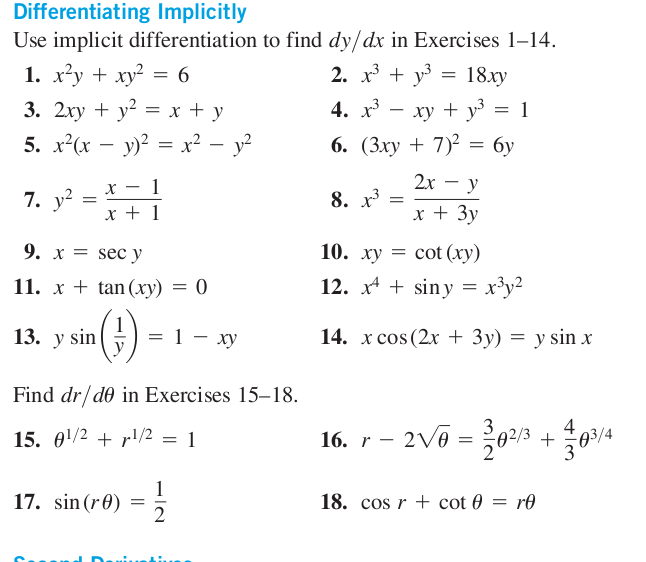
Use Implicit Differentiation To Find Dy Dx In Chegg Com
2^x 2^y=2^x y find dy/dx at x=y=1
2^x 2^y=2^x y find dy/dx at x=y=1-Given y = 4x/(x^2 5) find dy/dx, writing your answer as a single fraction in its simplest form Answered by Laurence C Find the inverse of y = (5x4) / (2x3) Answered by Xuanyi A We're here to help 44 (0) 3 773 60 support@mytutorcouk Contact us Company InformationSimple and best practice solution for dy/dx(2/x2)y=1/x equation Check how easy it is, and learn it for the future Our solution is simple, and easy to understand, so don`t hesitate to use it as a solution of your homework



How To Find Dy Dx When Y Sin X 2 Y 2 Quora
29/5/18 Ex 94, 12 Find a particular solution satisfying the given condition 𝑥 𝑥2−1 𝑑𝑦𝑑𝑥=1;𝑦=0 When 𝑥=2 𝑥 𝑥2−1 dy = dx dy = 𝑑𝑥𝑥(𝑥2 − 1) Integrating both sides 𝑑𝑦 = 𝑑𝑥𝑥(𝑥2 − 1) 𝑦 = 𝑑𝑥𝑥(𝑥 1)(𝑥 − 1) We can write integrand as 1𝑥(𝑥 1If `y=x^(x^(x^(oo)))`, then prove that, `(dy)/(dx)=(y^(2))/(x(1y log x))`Welcome to Doubtnut Doubtnut is World's Biggest Platform for Video Solutions$ x = t^2 1 $, $ \quad y = e^t 1 $ Calculus Early Transcendentals Chapter 10 Parametric Equations and Polar Coordinates Section 2 Calculus with Parametric Curves
Extended Keyboard Examples Upload Random Compute answers using Wolfram's breakthrough technology & knowledgebase, relied on by millions of students & professionals For math, science, nutrition, history, geographyExamples Example 1 Example 2Find dy/dx y = natural log of x^2 y = ln (x2) y = ln ( x 2) Differentiate both sides of the equation d dx (y) = d dx (ln(x2)) d d x ( y) = d d x ( ln ( x 2)) The derivative of y y with respect to x x is y' y ′ y' y ′ Differentiate the right side of the equation Tap for more steps Differentiate using the chain rule, which states that
6/2/18 y = 3/2x^2 2/x 5/2 The nice thing about this differential equation is that the dy/dx is already isolated, therefore the answer can be obtained by simply integrating both sides int dy = int 3x 2/x^2 dx y = 3/2x^2 2 x^1 C y =3/2x^2 2/x C 2 = 3/2(1)^2 2/1 C 4 3/2 = C 5/2 = C Therefore, the solution is y = 3/2x^2 2/x 5/2 Hopefully this helps!Click here👆to get an answer to your question ️ If y^x = x^y , then find dy/dx Join / Login > 12th > Maths > Continuity and Differentiability > Logarithmic Differentiation11/3/21 Ex 53, 11 Find 𝑑𝑦/𝑑𝑥 in, 𝑦 = cos–1 ((1− 𝑥^2)/( 1 𝑥2 )) , 0 < x < 1 𝑦 = cos–1 ((1− 𝑥^2)/( 1 𝑥2 )) Putting x = tan θ y



4 2 Implicit Differentiation
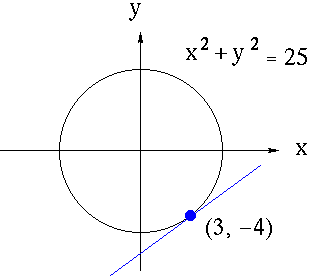



Implicit Differentiation
11/2/ Dy/dx=y21/x^21 y(2)=2 ayudaaaaa, solo sé que es por separación de variables Recibe ahora mismo las respuestas que necesitas!Find dy/dx y^2(y^24)=x^2(x^25) Differentiate both sides of the equation Differentiate the left side of the equation Tap for more steps Differentiate using the Product Rule which states that is where and By the Sum Rule, the derivative of with respect to isSolve your math problems using our free math solver with stepbystep solutions Our math solver supports basic math, prealgebra, algebra, trigonometry, calculus and more




Q5 If X 2 Xy Y 2 100 Find Dy Dx Implicit Function If X2 Xy Y2 100 Find Dy Dx Youtube
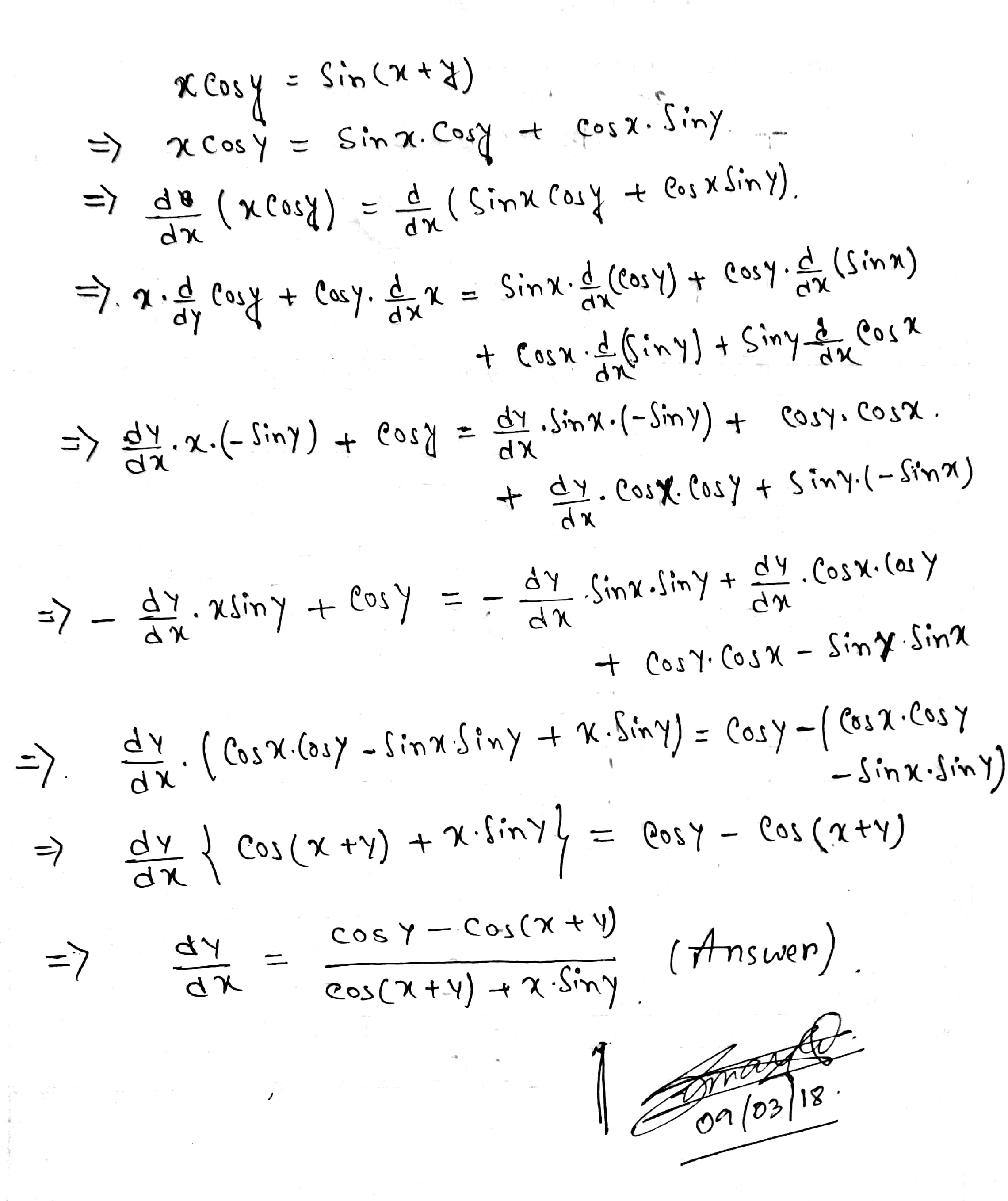



Find Dy Dx Of X Cos Y Sin X Y Socratic
Find the solution of the differential equation that satisfies the given initial conditiondy/dx = y^2 1, y(1) = 0 Question 28 (OR 1st Question) If √(1−𝑥^2 ) √(1−𝑦^2 ) = a (x − y), then prove that 𝑑𝑦/(𝑑𝑥 ) = √(1 − 𝑦^2 )/√(1 − 𝑥^2 ) Finding 𝒅𝒚/𝒅𝒙 would be complicated here To make life easy, we substitute x = sin A y = sin B (As √(1−𝑥^2 )= √(1−sin^2𝐴 )=√(cos^2𝐴 )) And then solve Let's substitute xClick here👆to get an answer to your question ️ If f'(x) = √(2x^2 1) and y = f(x^2) then find dydx at x = 1 Join / Login > 12th > Maths > Continuity and Differentiability > Derivatives of Composite Functions and Chain Rule
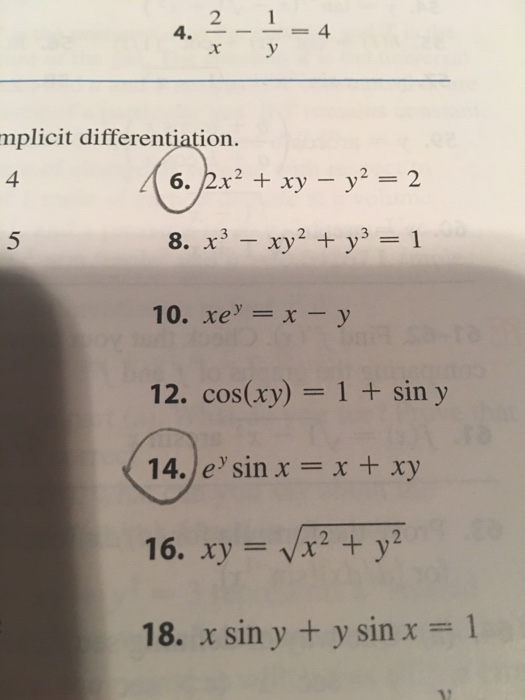



Find Dy Dx By Implicit Differentiation 2x 2 Xy Chegg Com
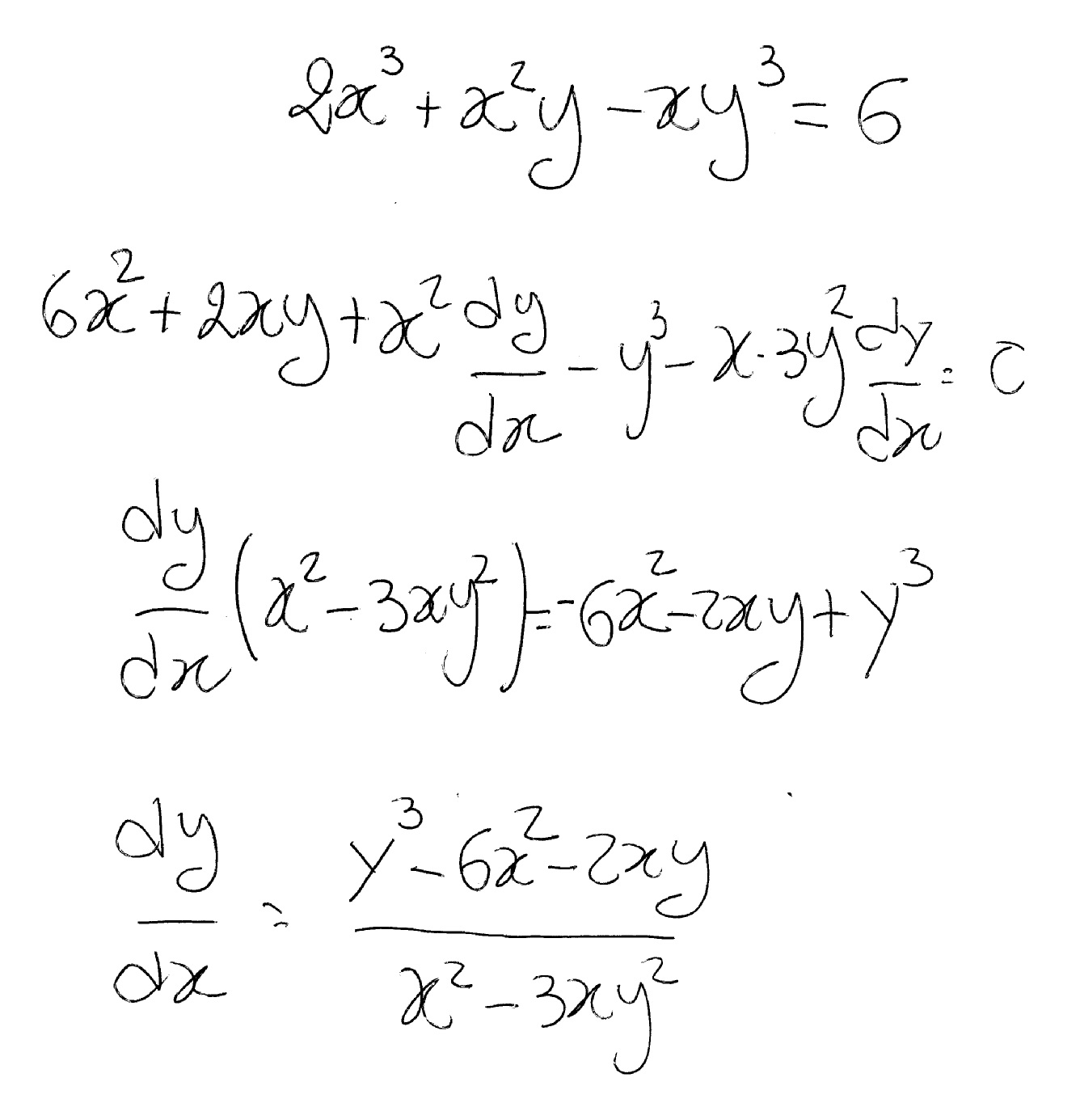



How Do You Find Dy Dx By Implicit Differentiation For 2x 3 X 2 Y Xy 3 6 Socratic
8/2/13 the given equation is where A is a constant substitute therefore the equation becomes thus now differentiate wrt x, since the value of it cannotFind dy/dx x^2= (xy)/ (xy) x2 = x y x y x 2 = x − y x y Differentiate both sides of the equation d dx (x2) = d dx (x y x y) d d x ( x 2) = d d x ( x − y x y) Differentiate using the Power Rule which states that d dxxn d d x x n is nxn 1Click here👆to get an answer to your question ️ The solution of dy/dx = x^2 y^2 1/2xy satisfying y(1) = 1 is given by



Secure Media Collegeboard Org Digitalservices Pdf Ap Apcentral Ap15 Calculus Ab Q4 Pdf
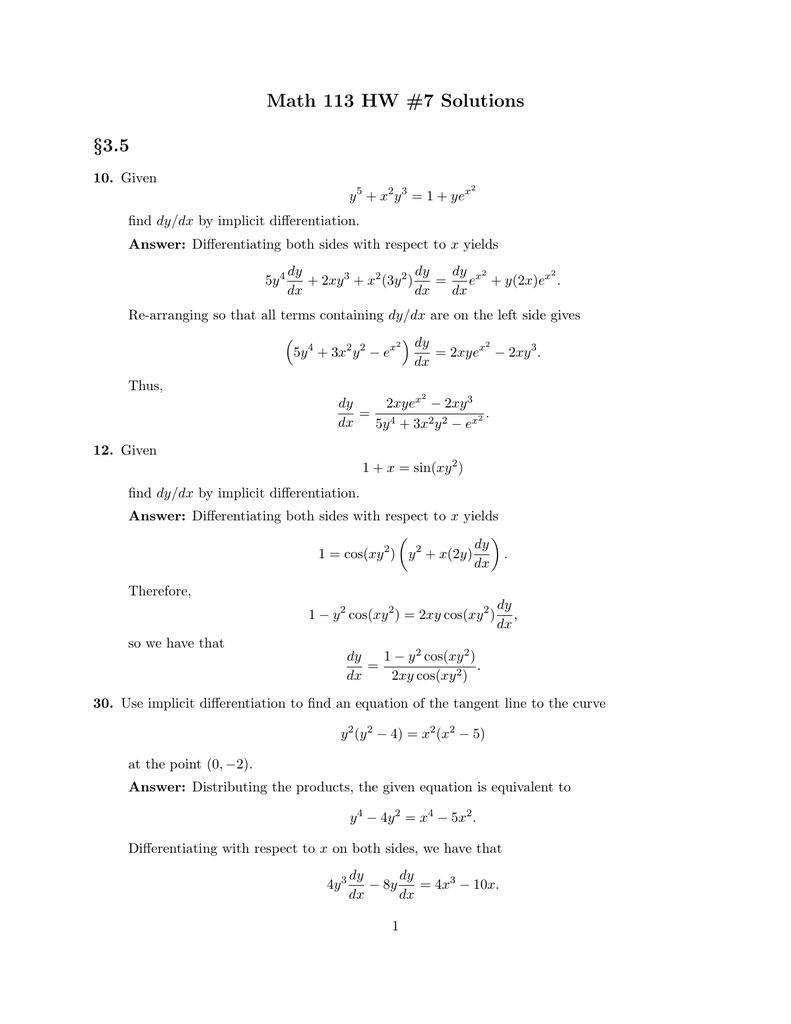



Math 113 Hw 7 Solutions 3 5
Find dy/dx at x = 1, y = pi/4 if sin2 y cos xy = K Welcome to Sarthaks eConnect A unique platform where students can interact with teachers/experts/students to get\frac{dy}{dx}=1x^2y^2, Given Here, \frac{dy}{dx} represents the derivative of y with respect to x I will solve for x and y, treating y as a function of x (essentially y=f(x)) \int \frac{dy}{dx}dx=\int 1x^2y^2dxClick here👆to get an answer to your question ️ If x = at^2 and y = 2at , then find d^2ydx^2




Find Dy Dx If X 2 2xy Y 2 0 Brainly In



Http Www Math Sci Hokudai Ac Jp S Settepanella Teachingfile Calculus Calculus2 Pagine Lineintex Pdf
If x = e t sin t, y = e t cos t, then d 2 y/dx 2 at t = π is equal to If x = log b a, y = log c b, z = log a c, then xyz is If x = sin t and y = sin pt, then the value of (1 x 2) d 2 y / dx 2 x (dy / dx) p 2 y = If x = sin1 (3t 4t 3) and y = cos1 √(1t 2), dy/dx is equal to If x > 0, y > 0 and x 2 y 2 = 8 x ∈ R, then If X24/1/ Let y = y(x) be the solution curve of the differential equation, (y^2 x)dy/dx = 1, satisfying y(0) = 1 asked in Mathematics by Pankaj01 ( 503k points) jee mainClick here 👆 to get an answer to your question ️ x^2y^2=xy find dy/dx sajidpatel9063 sajidpatel9063 Math Secondary School answered X^2y^2=xy find dy/dx 1 See answer sajidpatel9063 is waiting for your help Add your answer and earn points



Solve The Differential Equation Dy Dx 1 X Y2 Xy2 When Y 0 X 0 Studyrankersonline



Q Tbn And9gcqqdjererih8cbajqv Puntih4ikbw7iy9bdv7cgyhxgixkwubp Usqp Cau
6/8/21 Find dy/dx, when If x = 2cos θ cos 2θ and y = 2sin θ sin 2θ, prove that dy/dx = tan(3θ/2) asked Apr 17 in Differentiation by Kaina ( 304k points) differentiationSolve your math problems using our free math solver with stepbystep solutions Our math solver supports basic math, prealgebra, algebra, trigonometry, calculus and more13/4/21 Example 35 Chapter 5 Class 12 Continuity and Differentiability (Term 1) Last updated at by Teachoo Next Example 36→ Chapter 5 Class 12 Continuity and Differentiability (Term 1) Serial order wise;




If Sin X Y Y X X 2 Y 2 Find Dy Dx
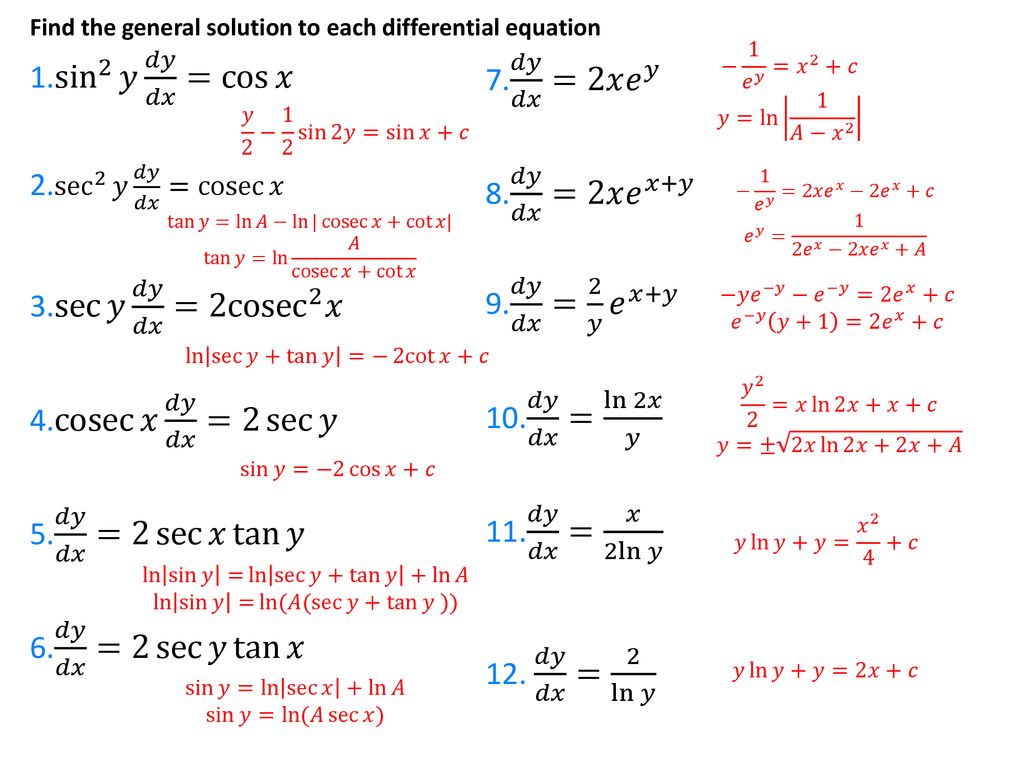



Differential Equations Separation Of Variables Ppt Download
Solve your math problems using our free math solver with stepbystep solutions Our math solver supports basic math, prealgebra, algebra, trigonometry, calculus and moreCalculadoras gratuitas paso por paso para álgebra, Trigonometría y cálculo If y = xx, prove that d2y/dx2 (1/y)(dy/dx)2 y/x = 0 Welcome to Sarthaks eConnect A unique platform where students can interact with
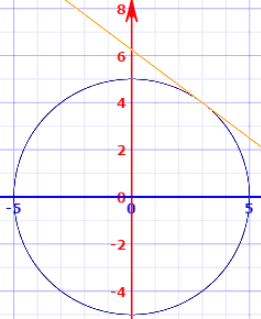



Implicit Differentiation




X2 Y2 Dx2xydy0 2dfracdydxdf See How To Solve It At Qanda
Find dy/dx x^24xyy^2=4 Differentiate both sides of the equation Differentiate the left side of the equation Tap for more steps Differentiate Tap for more steps By the Sum Rule, the derivative of with respect to is Differentiate using the Power Rule which states that is whereSolve your math problems using our free math solver with stepbystep solutions Our math solver supports basic math, prealgebra, algebra, trigonometry, calculus and more17/6/18 views around the world You can reuse this answer Creative Commons License



Find Dy Dx When X And Y Are Connected By The Relation X2 Y2 2 Xy Studyrankersonline
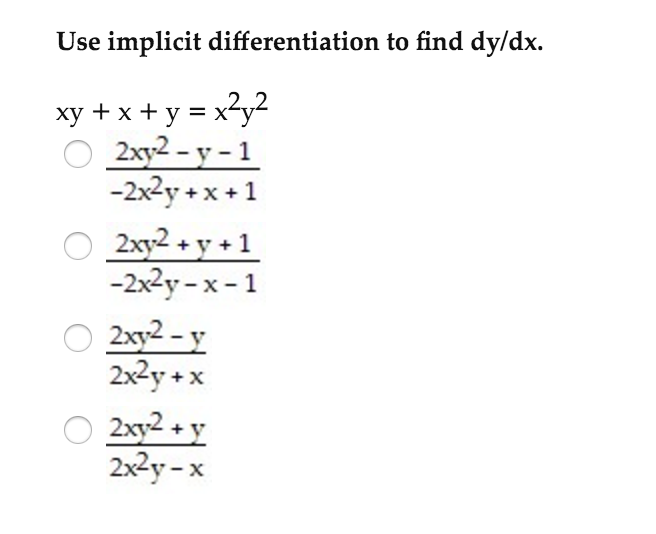



Use Implicit Differentiation To Find Dy Dx Xy X Chegg Com
If y = 2^x, find dy/dx Q If y = 2^x, find dy/dx ANSWER 1) Take Logs of both sides of our equation y = 2^x So we get log (y)=log (2^x) 2) Apply relevant log rule to rhs Log rule log (a^b) = b log (a) nb the dot between b and log (a) represents x / multiply / times ) So we get log (y) = x log (2) dy/dx=x/y x^2y^2=1 Differentiate wrt x d/dxx^2d/dxy^2=d/dx1 We already know how to deal with the first and third terms, so lets get them out the way d/dxx^2d/dxy^2=d/dx1 2xd/dxy^2=0 For the remaining term we use the chain rule, we don't know how to differentiate y^2 wrt x but we do know how to differentiate y^2 wrt y (it the same as differentiating x^2 wrt x!)10/7/16 y = xtan (ln x C) This is a first order linear homogeneous equation NB here homogeneous has its own meaning it means that the equation can be written in form y' = f(x,y) and that f(kx, ky) = f(x,y) for constant k so standard approach is to let v = y/x so y = v * x y' = v' x v thus, plugging this into the original v' x v = v^2 v 1 v' x = v^2 1 (v')/(v^2 1) = 1/(v^2 1




Find Dydx Where X 2 Y 2 3xy 1



How To Homogeneous Reducible Differential Equation Dy Dx 2x Y 1 X 2y 1 Quora
14/4/21 If x = sin(\(\frac{1}{a}\)log y) , show that (1–x2)y2–xy1–a2 y = 0 Note y 2 represents second order derivative ie \(\frac{d^2y}{dx^2}\) and y 1 = dy/dx Given, x = sin(\(\frac{1}{a}\) log y) \((logy)=asin^{1}x\) y = \(e^{asin^{1}x}\)equation 1 to prove (1 x 2)y 2xy 1 a 2 =0 We notice a second–order derivative in the expression to be proved so first take the step toFind dy/dx y^2=(x1)/(x1) Differentiate both sides of the equation Differentiate the left side of the equation Tap for more steps Differentiate using the chain rule, which states that is where and Tap for more steps To apply the Chain Rule, set as2/5/18 Click here 👆 to get an answer to your question ️ Find dy/dx 1 If y = x^4 1/x^2 x Find dy/dx



Find Dy Dx Of X 2 Y 2 2 4xy Sarthaks Econnect Largest Online Education Community
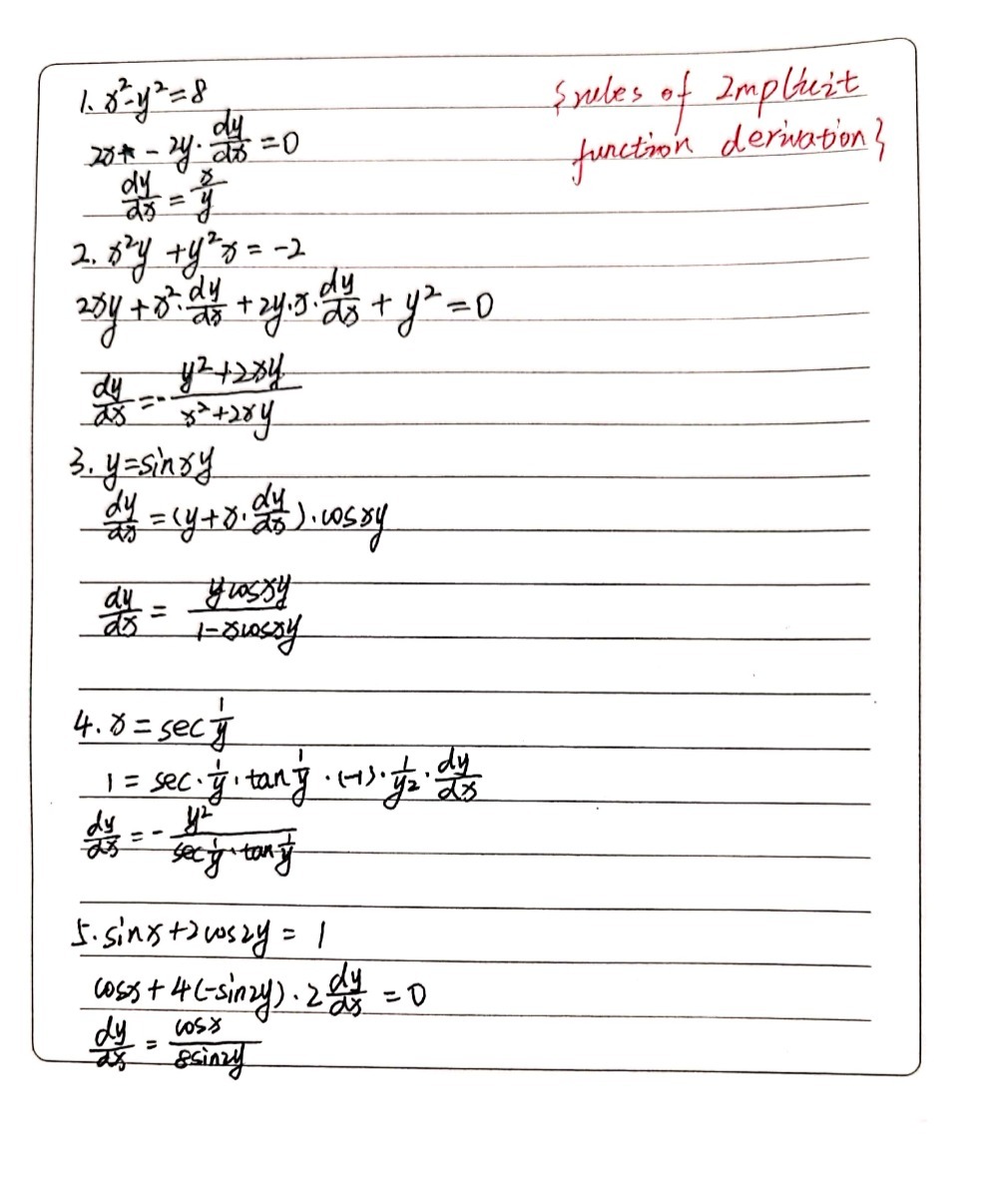



Use Implicit Differentiation To Find Dy Dx 1 X2 Gauthmath
Find $ dy/dx $ and $ d^2y/dx^2 $ For which values of $ t $ is the curve concave upward?To ask Unlimited Maths doubts download Doubtnut from https//googl/9WZjCW `(1x^2)dy/dx=1y^2`11/6/18 Explanation differentiate implicitly with respect to x noting that d dx (y) = dy dx and d dx(y2) = 2y dy dx differentiate xy using the product rule 2xdy dx 2y 2ydy dx = 1 dy dx dy dx(2x 2y− 1) = 1 −2y dy dx = 1 −2y 2x 2y− 1 Answer link




X 2 Y 2 1 Find Dy Dx By Implicit Differentiation Youtube
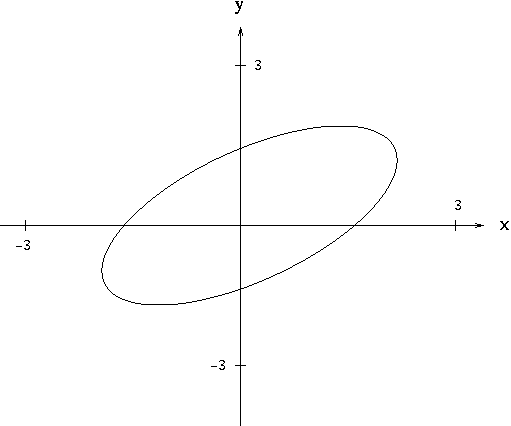



Implicit Differentiation
Int (x^2 y^2 x y^3) dx dy, x=2 to 2, y=2 to 2 Natural Language;Extended Keyboard Examples Upload Random Compute answers using Wolfram's breakthrough technology & knowledgebase, relied on by millions of students & professionals For math, science, nutrition, history, geographyTo ask Unlimited Maths doubts download Doubtnut from https//googl/9WZjCW `(3x yy^2)dx(x^2x y)dy=0`



How To Find Dy Dx Of The Function Y X 1 X 2 X 1 2 Quora




4 1 Implicit Differentiation
Find D Y D X , If Y = Sin − 1 2 X 1 1 4 X11/3/21 Ex 56, 1 If x and y are connected parametrically by the equations without eliminating the parameter, Find 𝑑𝑦/𝑑𝑥, x = 2〖𝑎𝑡〗^2, y = 〖𝑎𝑡〗^4Here 𝑑𝑦/𝑑𝑥 = (𝑑𝑦/𝑑𝑡)/ (𝑑𝑥/𝑑𝑡) Calculating 𝒅𝒚/𝒅𝒕 𝑦 = 〖𝑎𝑡〗^4 𝑑𝑦/𝑑𝑡 " =" 〖4𝑎𝑡〗^ (4 −1




Use Implicit Differentiation To Find Dy Dx In Chegg Com
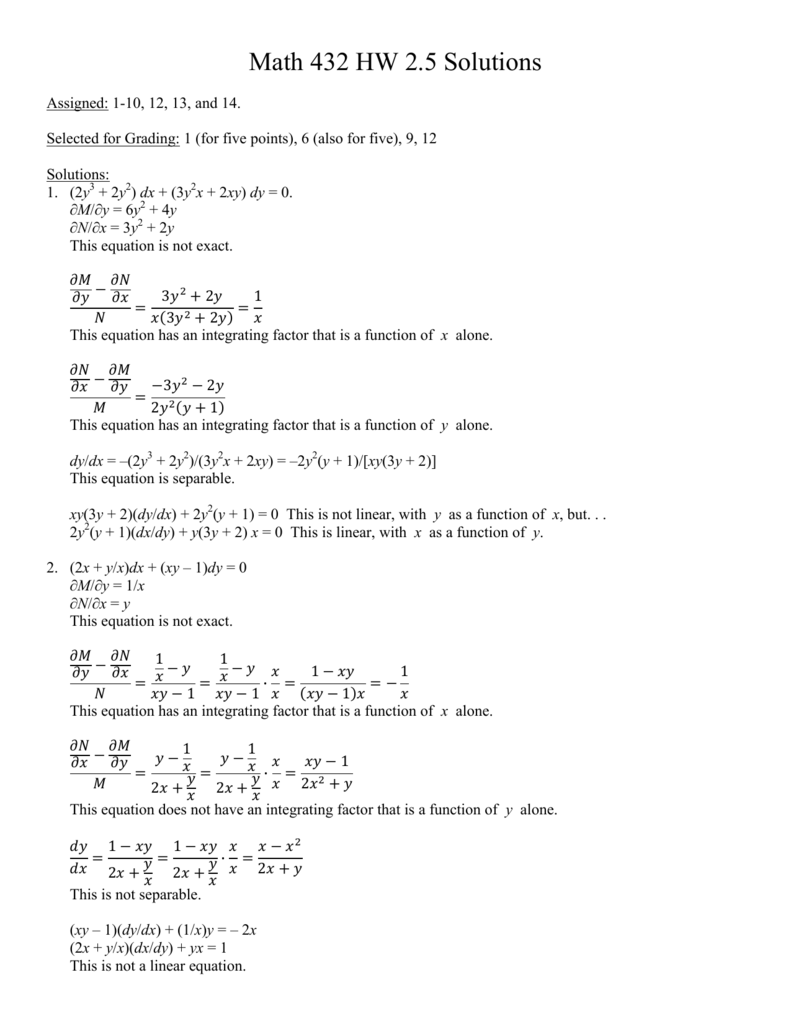



Math 432 Hw 2 5 Solutions




Differentiating Implicitly Use Implicit Chegg Com
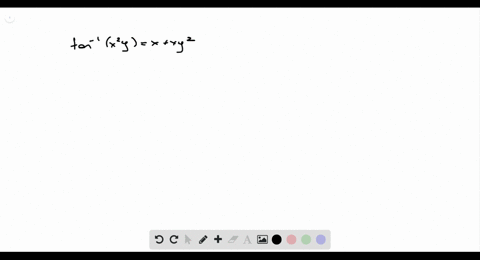



Solved Find Dy Dx By Implicit Differentiation Tan 1 X 2y X Xy 2



3 8 Implicit Differentiation Calculus Volume 1
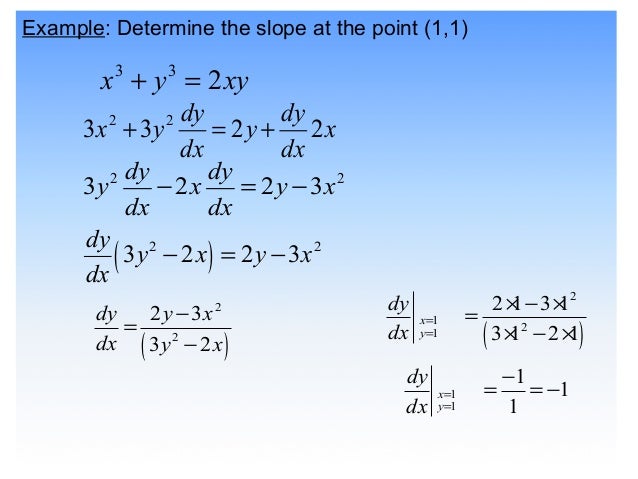



4 1 Implicit Differentiation



Q Tbn And9gcq69xqaiwgxy95 44f5sqsm2pnlgxvor Roue6xadfczqpkv4qx Usqp Cau




Solve Y 1 Xy Dx X 1 Xy X 2y 2 Dy 0 Mathematics Stack Exchange



3 8 Implicit Differentiation Calculus Volume 1
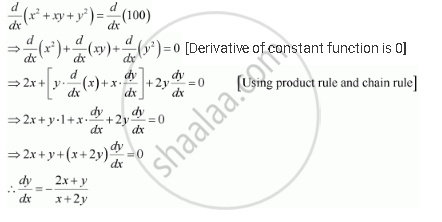



Find Dx Dy For X2 Xy Y2 100 Mathematics Shaalaa Com



Find Dy Dx At X 1 Y Pi 4 If Sin 2 Y Cos Xy K Sarthaks Econnect Largest Online Education Community




Find Dy Dx Of X 2 Xy Y 2 100 By First Principle Of Derivatives Brainly In




Ex 9 5 15 Class 12 Find Solution 2xy Y 2 2x 2 Dy Dx 0 When




If Sin Xy X Y X 2 Y Find Dy Dx Brainly In




Ex 9 4 16 For Xy Dy Dx X 2 Y 2 Find Solution




Question 5th Please Q 5 Find Dydx If X2 Y2 2 Xy Maths Continuity And Differentiability Meritnation Com




Engineering Mathematics Notes




Solve The Following Initial Value Problem Dy Dx 1 X Y 2 Xy 2 When Y 0 X 0




Ex 5 5 12 Find Dy Dx Xy Yx 1 Class 12 Cbse Ncert




Solving The Bernoulli Differential Equation X 2 Dy Dx Y 2 Xy Youtube



How To Homogeneous Reducible Differential Equation Dy Dx 2x Y 1 X 2y 1 Quora



Solved Solve The Following Differential Equations X Y 3 Dx X Y 1 Dy 0 2 X Y 1 Dx 3x 4y 2 Dy C 3 1 Y 2 Xy 2 Dx X 2y Y 2xy Dy Course Hero
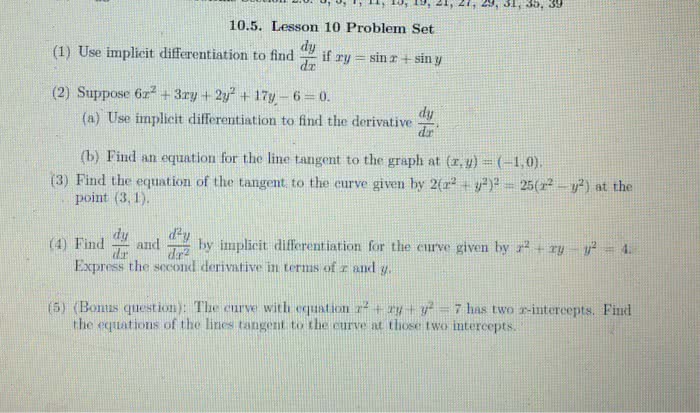



Oneclass 1 Use Implicit Differentiation To Find Dy Dx If Xy Sin X Sin Y 2 Suppose 6x2 3xy




If X2 Y2 2 Xy Find Dy Dx Mention Each And Every Step Mathematics Topperlearning Com Gwvwfskk




Solve The Linear Differential Equation X 2 1 Dy Dx Xy X Youtube
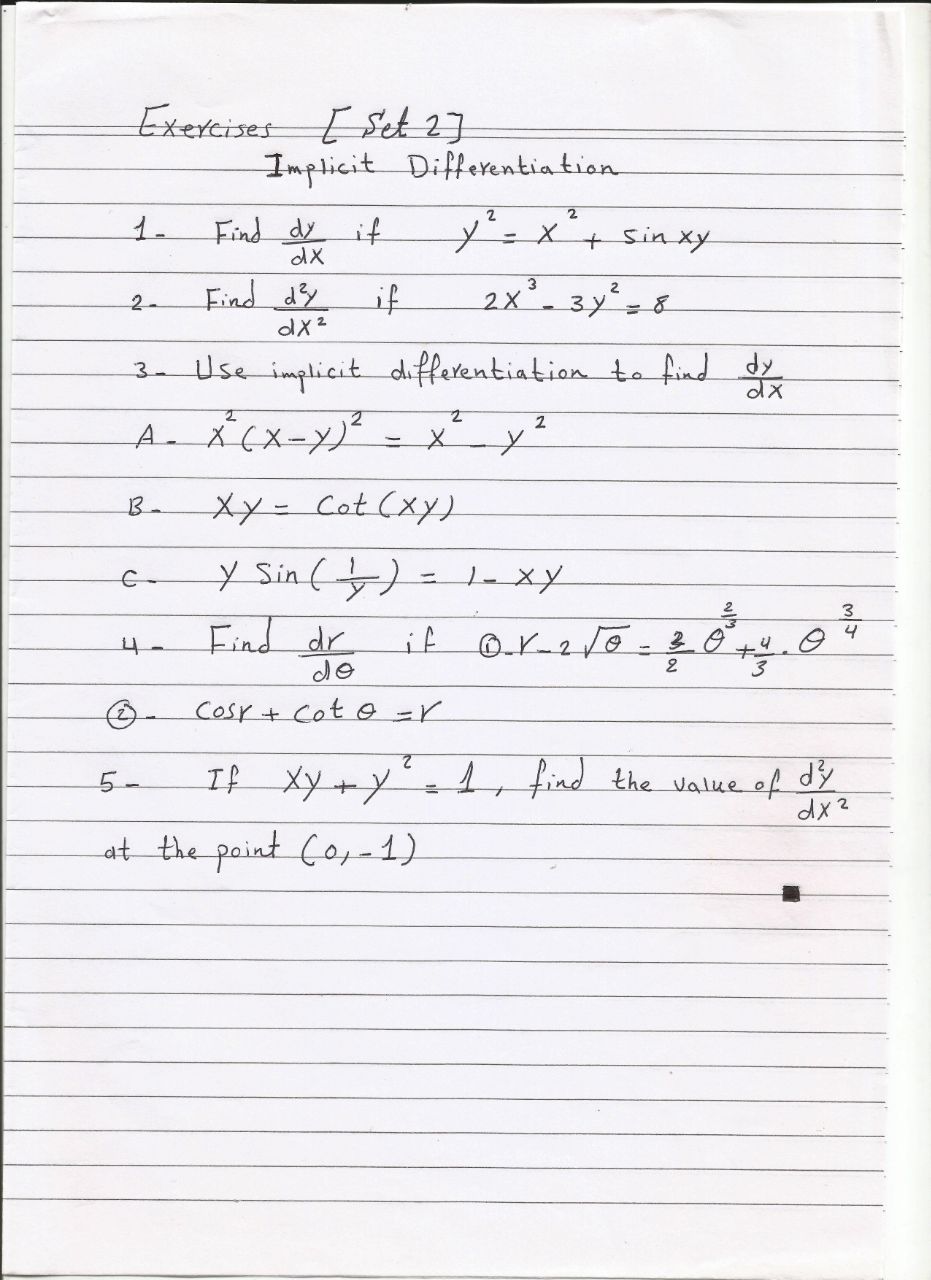



Answered Exercises Set 27 Implicit Differentia Bartleby
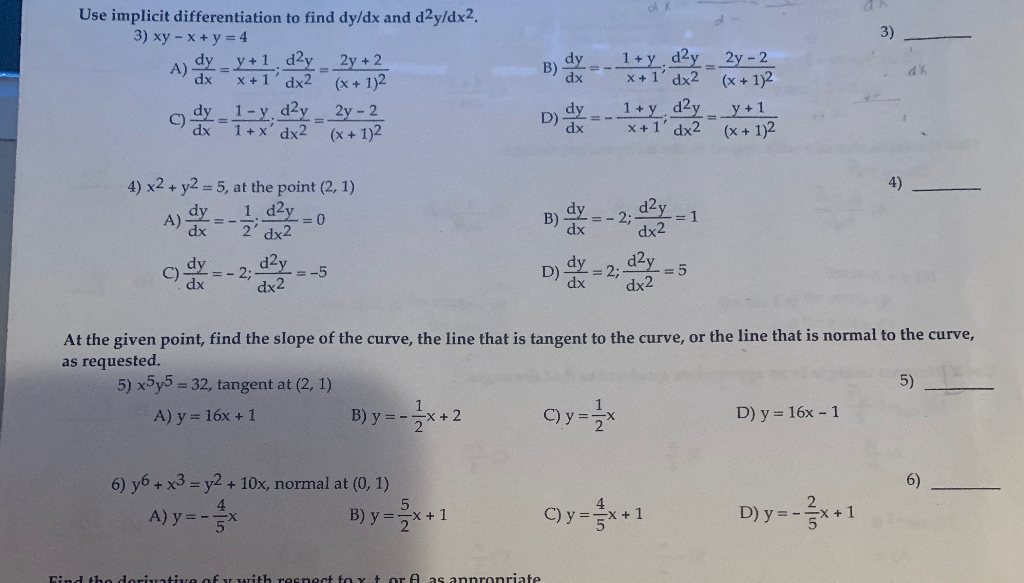



Use Implicit Differentiation To Find Dy Dx And Chegg Com




If Y X X Y 1 Then The Value Of Dydx At X 1 Is



Secure Media Collegeboard Org Digitalservices Pdf Ap Apcentral Ap15 Calculus Ab Q4 Pdf




The Solution Of Dy Dx X 2 Y 2 1 2xy Satisfying Y 1 0 Is Given By



How To Find Dy Dx When Y Sin X 2 Y 2 Quora




Solution Of Y Xy 1 Dx X 1 Xy X 2y 2 Dy 0 Mathematics Stack Exchange
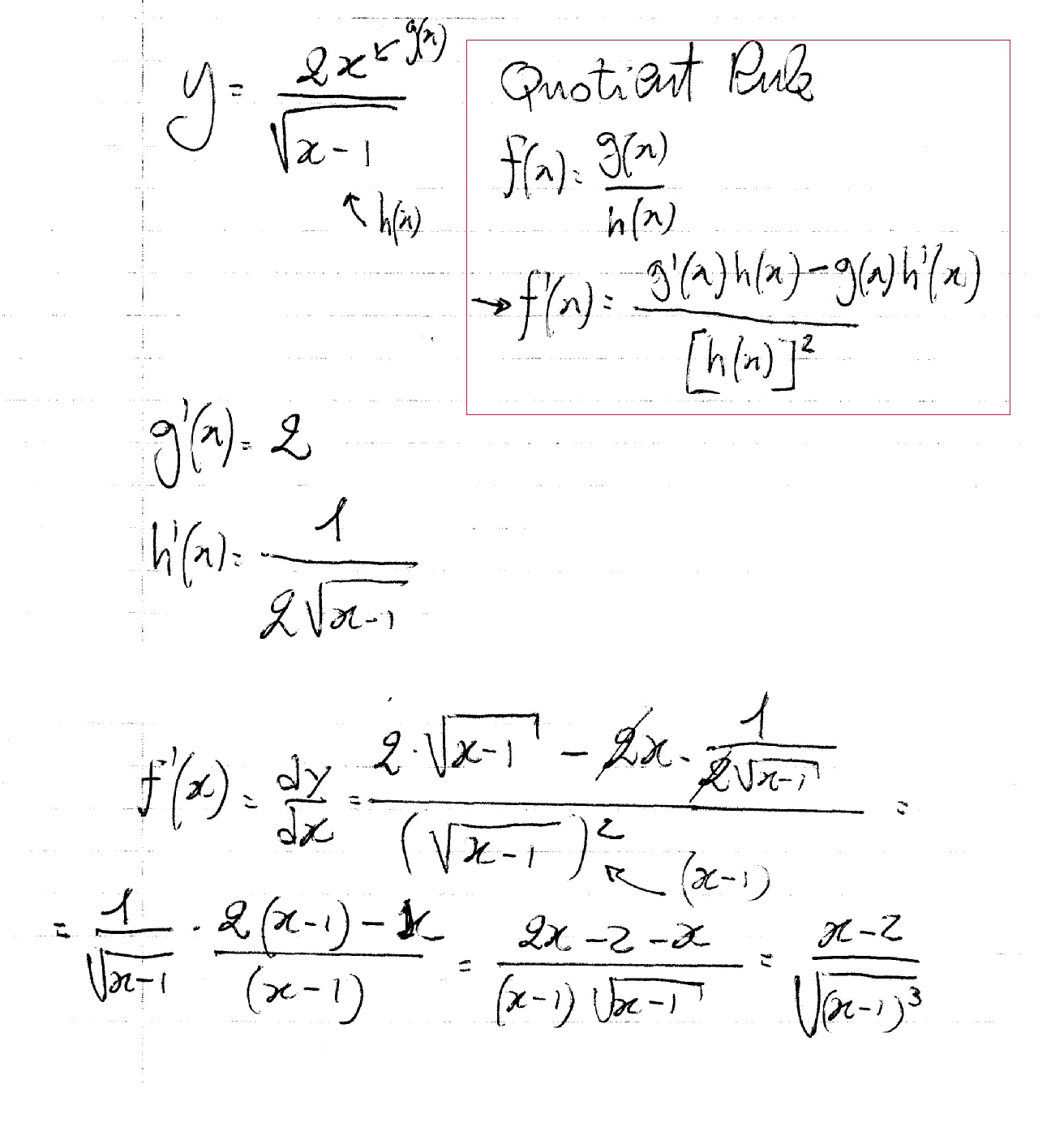



How Do You Find Dy Dx For Y 2x Sqrt X 1 Socratic
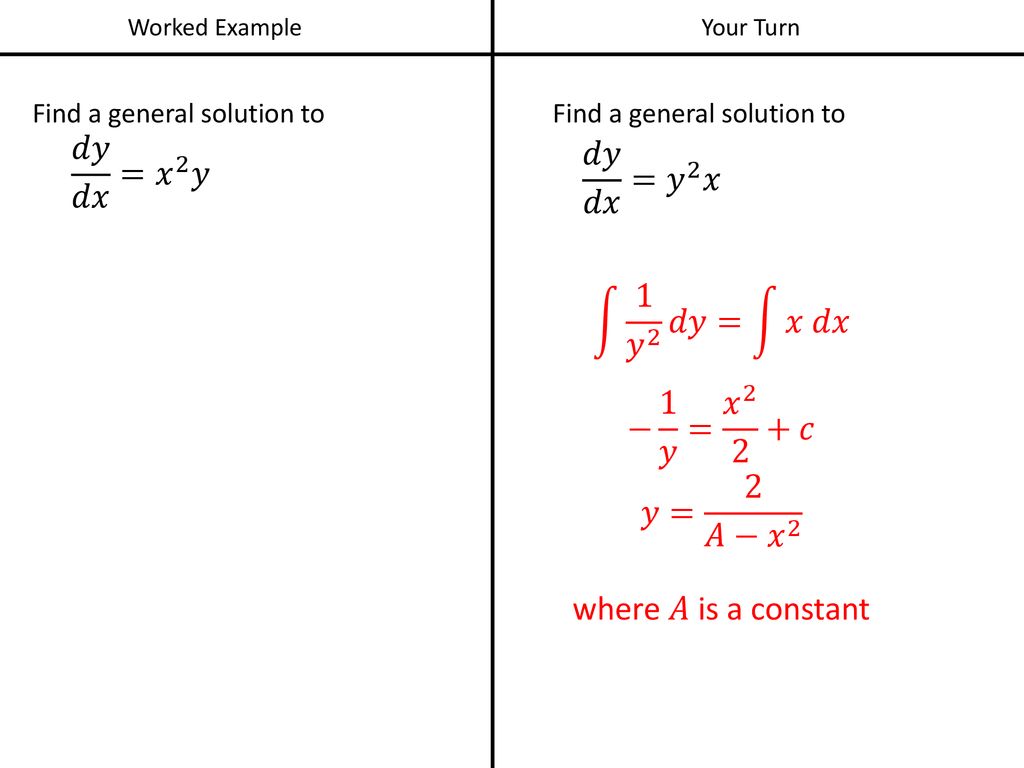



Differential Equations Separation Of Variables Ppt Download




Find Dy Dx By Implicit Differentiation X 2 4xy Chegg Com




If 2 X 2 Y 2 X Y Then Dydx Is Equal To




Use Implicit Differentiation To Find Dy Dx And Then Chegg Com
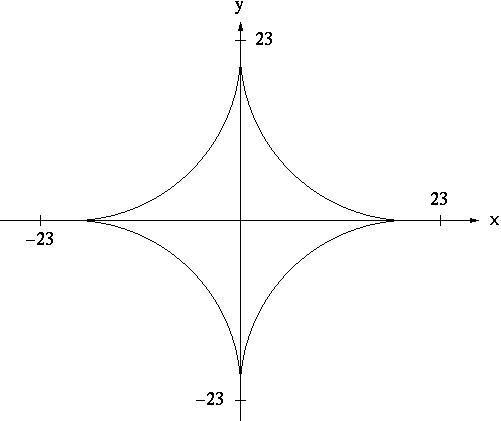



Implicit Differentiation
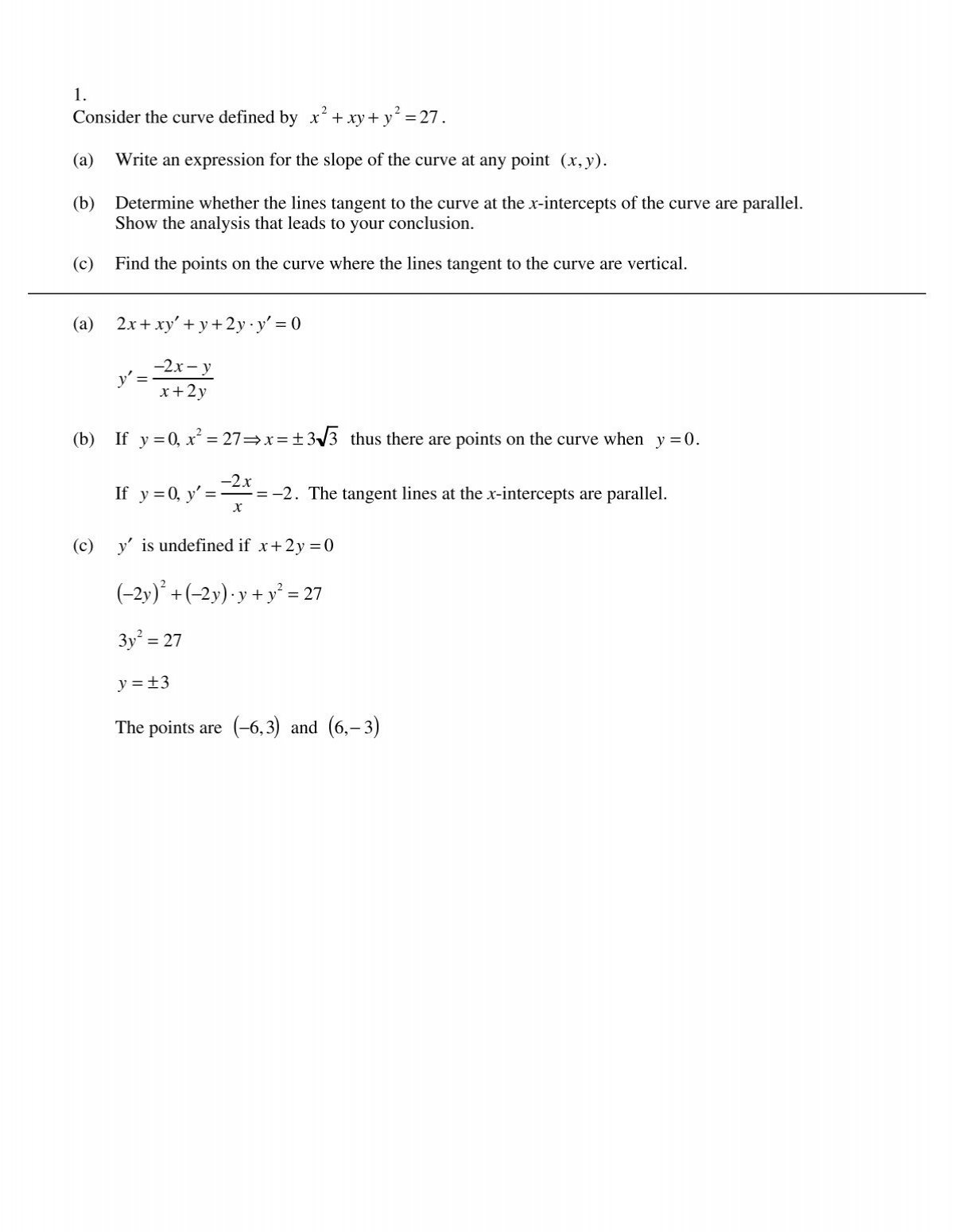



1 Consider The Curve Defined By X2 Xy Y2 27 A Write An
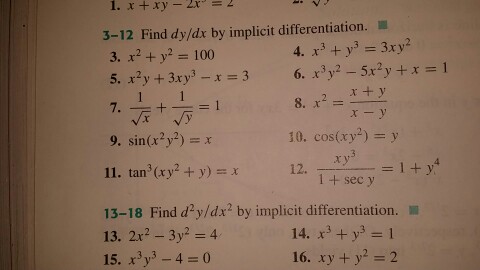



Find Dy Dx By Implicit Differentiation X 2 Y 2 Chegg Com




Q5 If X 2 Xy Y 2 100 Find Dy Dx Implicit Function If X2 Xy Y2 100 Find Dy Dx Youtube



4 2 Implicit Differentiation




Ex 5 3 5 Find Dy Dx In X2 Xy Y2 100 Class 12




Implicit Differentiation Advanced Example Video Khan Academy



Q Tbn And9gcs4zhqrg7tgdijngdtblf0awyqj0qnmbsqpb64ommtz0yjcalhv Usqp Cau
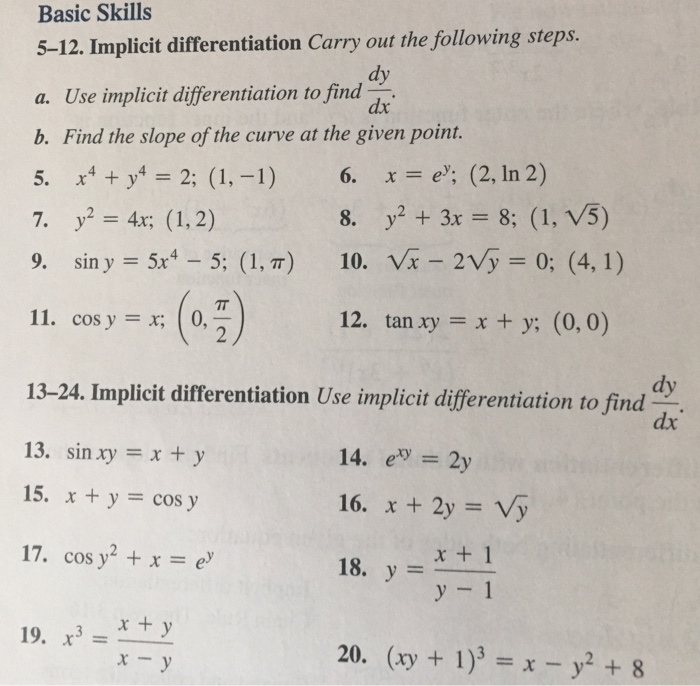



Implicit Differentiation Carry Out The Following Chegg Com



Dshsluskin Pbworks Com F Hwcalc 3 5 End Pdf




Ex 5 3 4 Find Dy Dx In Xy Y2 Tan X Y Chapter 5




Find Dy Dx By Implicit Differentiation 1 X3 73 Chegg Com



Solved Find The Particular Solution Indicated For The Following Course Hero




6 Find Dy Dx If X 2 Y 2 2xy A X 1 Y B Chegg Com




If X 2 Y 3 X 3y 2 Then Dy Dx Youtube




Worked Example Implicit Differentiation Video Khan Academy



4 2 Implicit Differentiation
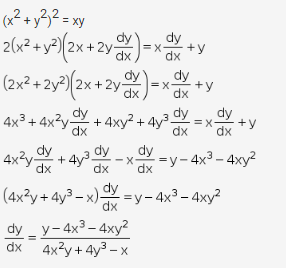



If X 2 Y 2 2 Xy Find Dy Dx Mention Each And Every Step Cbse Class 12 Learn Cbse Forum



Http Www Math Usu Edu Koebbe Online Math 1100 Lesson Examples Section2 7 Problem11 Pdf
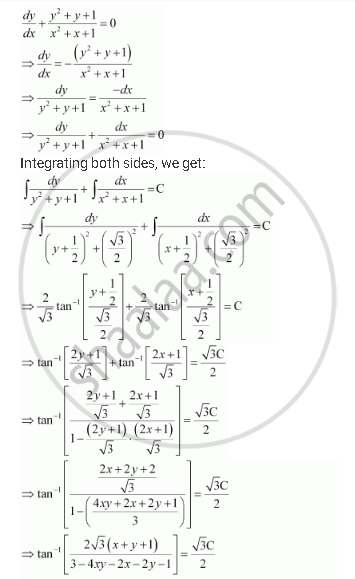



Show That The General Solution Of The Differential Equation Dy Dx Y 2 Y 1 X 2 X 1 0 Is Given By X Y 1 A 1 X Y 2xy Where A Is Parameter Mathematics Shaalaa Com




Solve Dy Dx 2x Y 1 X 2y 3 Youtube




Pure Mathematics Find Dy Dx In Terms Of X And Y When X Y 2xy 3y 2x 7 S O L U T I O N 1 This Is An Implicit Function Because We
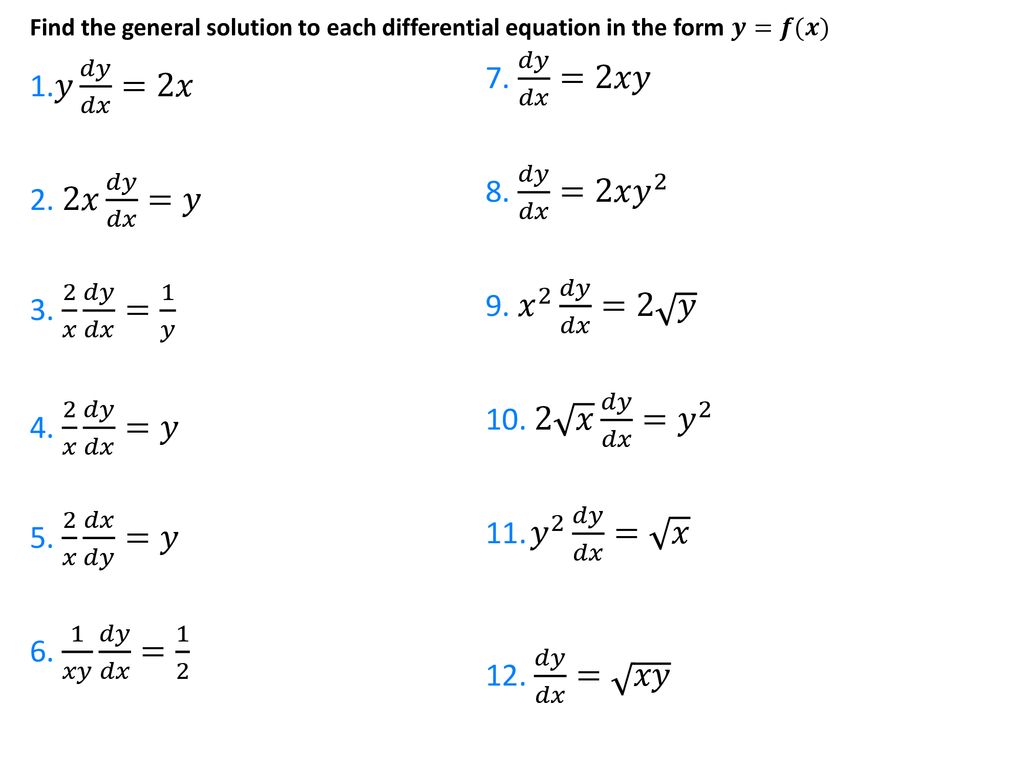



Differential Equations Separation Of Variables Ppt Download



If 1 X 2 1 2 1 Y 2 1 2 A X Y What Is Dy Dx Quora
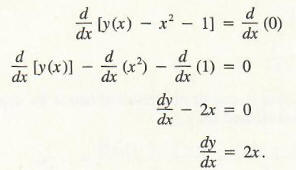



Find A Derivative With Step By Step Math Problem Solver
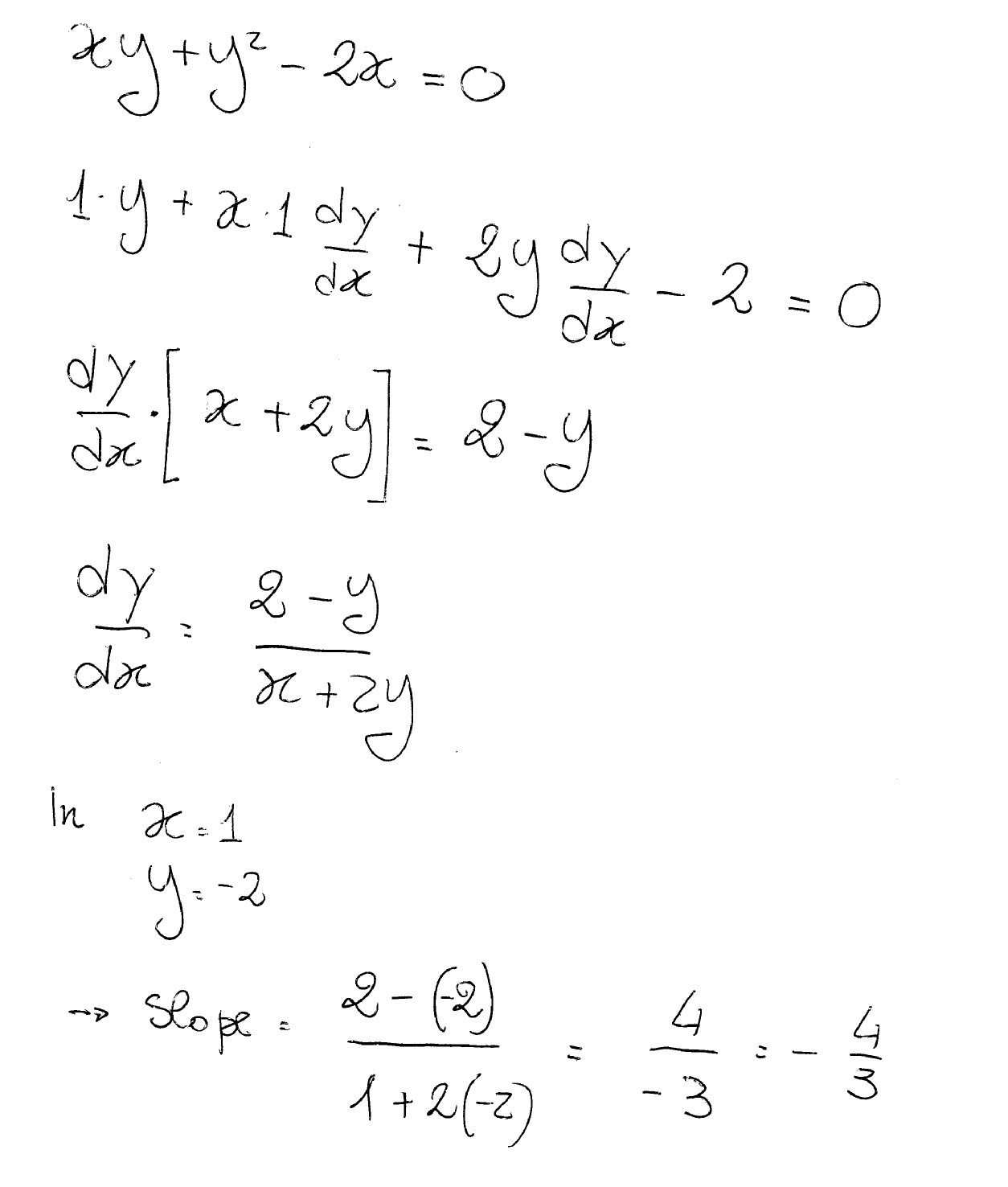



How Do You Differentiate Implicitly Xy Y 2x 0 To Find Dy Dx And Find The Slope Of The Curve At The Given Point 1 2 Socratic



Find Dy Dx When X And Y Are Connected By The Relation Sin Xy X Y X2 Y Studyrankersonline




Ex 5 3 5 Find Dy Dx In X2 Xy Y2 100 Class 12



1



Using Euler Rsquo S Method Find An Approximate Value Of Corresponding To 1 Given That Dy Dx X 2 Y And Y 1 When X 0 Use The Step Size H 0 25



What Is The Solution Of Homogeneous Differential Equation Dy Dx Y X 2 Y 2 X Quora
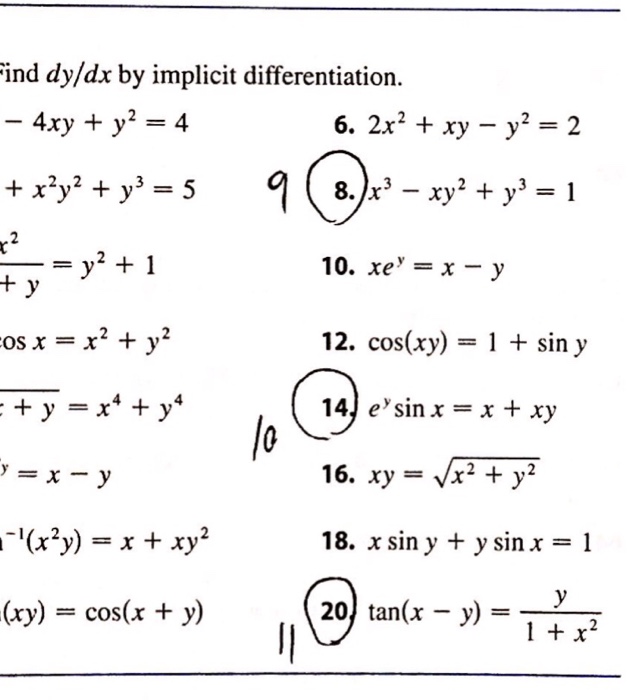



Find Dy Dx By Implicit Differentiation 2x 2 Xy Chegg Com



If X Y Y X What Is Dy Dx Quora



If X 2 Y 2 2 Xy Find Dy Dx Sarthaks Econnect Largest Online Education Community




Answers To The Review Problems For The First Exam 251 05 10 In Spring 06
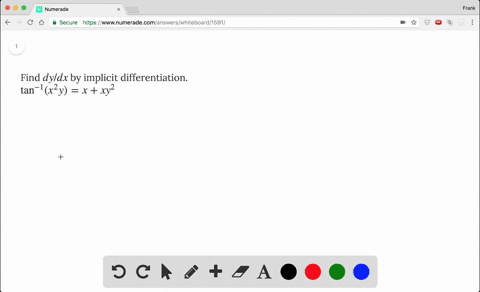



Solved Find Dy Dx By Implicit Differentiation Tan 1 X 2y X Xy 2




Find Dy Dx If X2 Y2 2 Xy Brainly In




If Y X Is The Solution Of Dy Dx X 2 1 Y 2 Y 0 2 Then Y 3 Homeworklib



Www Lcps Org Cms Lib Va Centricity Domain 2 5 notes filled out Pdf
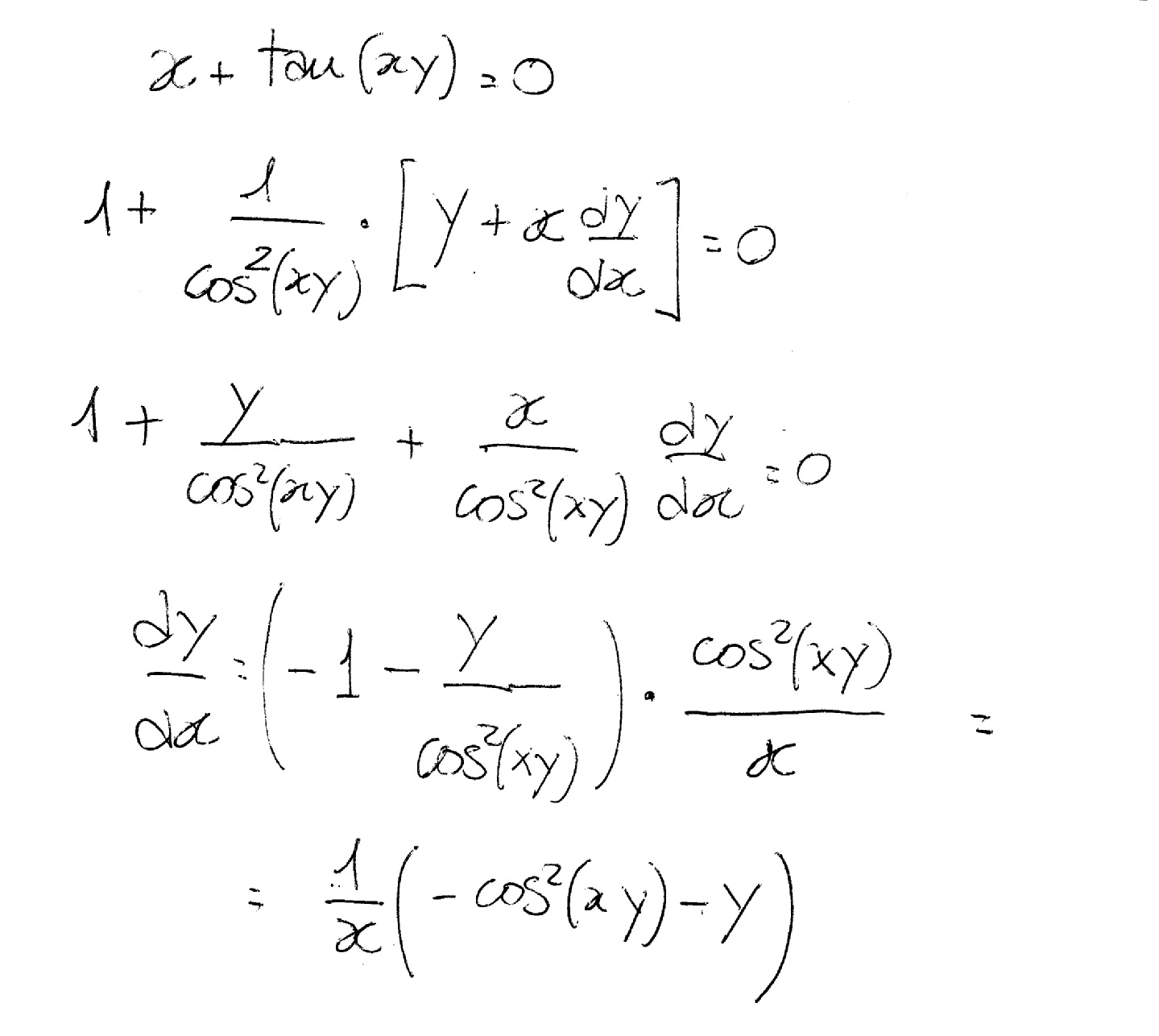



How Do You Find Dy Dx If X Tan Xy 0 Socratic




Solve Y 2 2x 2y Dx 2x 3 Xy Dy 0 Mathematics Stack Exchange



0 件のコメント:
コメントを投稿